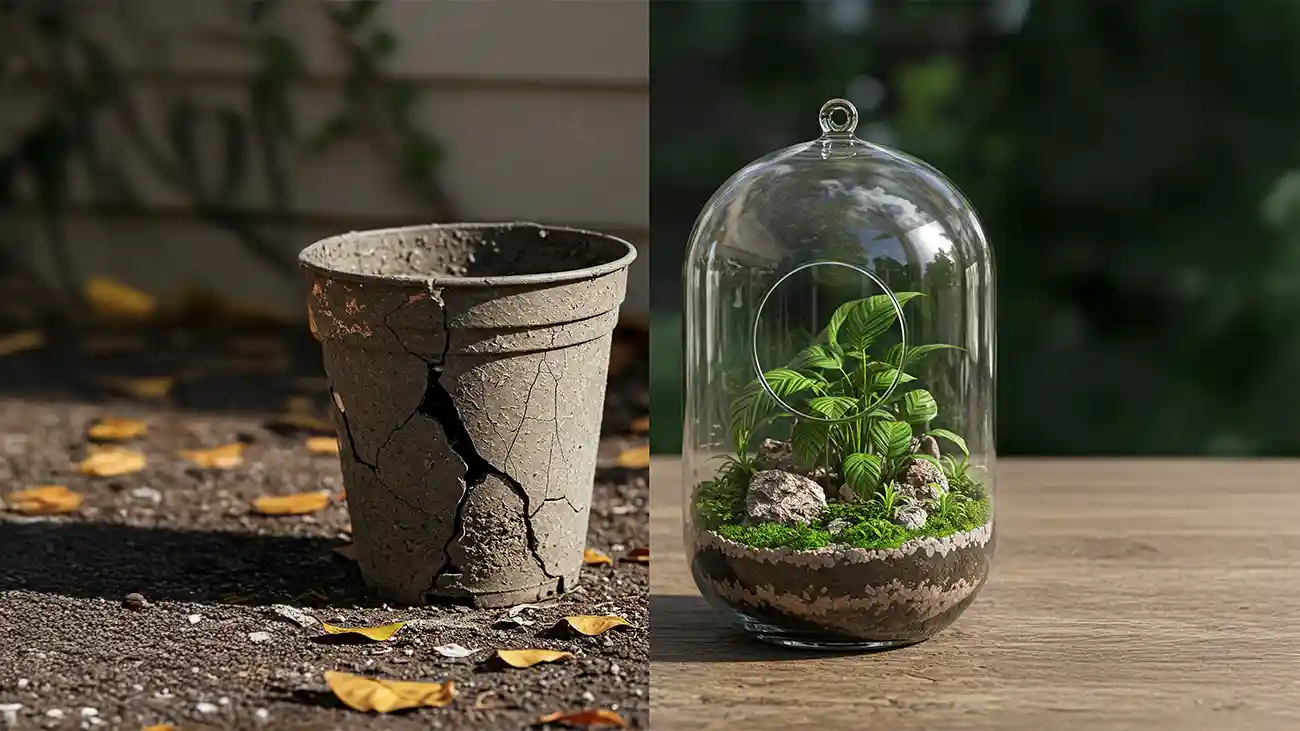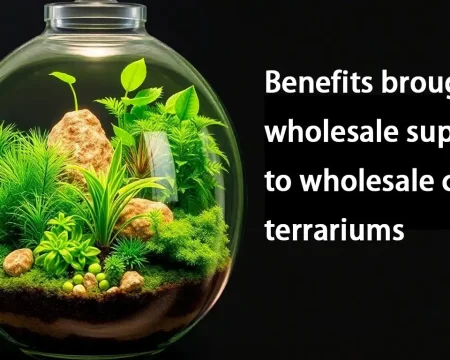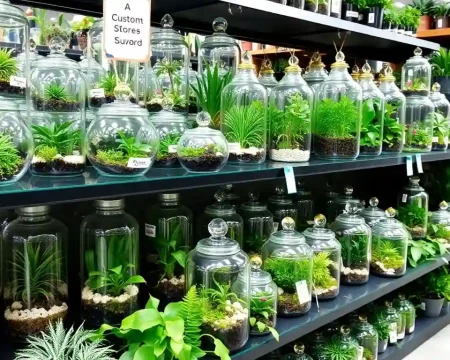Why Your Choice of Planters Impacts More Than Just Aesthetics
Imagine this: A florist unpacks a shipment of plastic planters, only to find cracks spiderwebbing across their surfaces. Or a retailer fielding complaints from customers who notice unsightly yellowing on their plant pots. These scenarios aren’t just frustrating—they’re costly.

When it comes to indoor plant containers, the debate between glass terrariums and plastic planters extends far beyond looks. Durability, cost-effectiveness, and customer satisfaction hinge on this choice. For wholesalers, retailers, and bulk buyers, selecting the right material can mean fewer returns, happier clients, and smarter long-term investments.
In this guide, we’ll break down why glass terrariums outperform plastic alternatives, backed by science, real-world data, and actionable insights tailored to your business needs.
| Feature | Glass Terrariums | Plastic Planters |
|---|---|---|
| Lifespan | 10+ years | 2–3 years |
| Thermal Resistance | Up to 300°C (no warping) | Melts at 60–100°C |
| UV Degradation | Resistant | Cracks/warps in 1–2 years |
| Chemical Safety | Non-toxic, no leaching | Releases BPA/phthalates over time |
| Maintenance | Wipe-clean; no stains | Stains easily; requires scrubbing |
| Environmental Impact | 100% recyclable | Landfill waste in 100+ years |
How Glass Terrariums Outlast Plastic Planters
Material Science Breakdown
Plastic planters may seem affordable upfront, but their lifespan tells a different story. Most plastics degrade under UV exposure, leading to brittleness and cracks within 2–3 years. Worse, they warp in high humidity and leach chemicals over time—a nightmare for plant health and brand reputation.
High-borosilicate glass, on the other hand, is engineered for resilience. It withstands extreme temperatures (up to 300°C) without warping, resists UV degradation, and remains scratch-free for decades. Unlike plastic, it won’t yellow or release toxins, making it ideal for long-term use.
Data-Driven Comparison
- Lifespan: Glass terrariums last 10+ years; plastic planters average 2–3 years.
- Replacement Costs: Bulk buyers save 60%+ over 5 years by switching to glass.
- Sustainability: Glass is 100% recyclable, while plastic often ends up in landfills.
For businesses, this translates to fewer replacements, stronger customer trust, and a greener brand image.
The Hidden Costs of Plastic Planters
While plastic planters may save $0.50 per unit upfront, their hidden costs add up:
- Returns & Complaints: Cracked or stained planters lead to 20–40% higher return rates.
- Environmental Penalties: Increasingly, eco-conscious buyers avoid plastic, hurting sales.
Case Study: A boutique gift shop switched to glass terrariums and saw a 40% drop in returns within six months. Plus, repeat orders jumped by 25% as customers raved about the premium look.
Why Glass Terrariums Save Time and Money
Cleaner, Safer, and Hassle-Free
Glass’s non-porous surface repels bacteria, mildew, and odors. No more scrubbing turmeric stains or battling algae growth. Plastic, however, traps residues and stains over time, requiring labor-intensive cleaning.

Bulk Storage Advantages
For wholesalers, glass’s stackability and scratch resistance simplify warehousing. Plastic’s tendency to warp in transit adds logistical headaches.
Pro Tip: Opt for tempered glass to eliminate breakage worries.
Partnering with a Reliable Glass Terrarium Supplier
Ready to upgrade your inventory? Here’s what to look for in a supplier:
- Custom Designs: Align with your branding (e.g., matte finishes, colored glass).
- Bulk Discounts: Ensure competitive pricing for large orders.
- Quality Assurance: Ask for thermal resistance testing and certifications.
Hio Glass: We specialize in wholesale solutions with global shipping, MOQ flexibility, and a 10-year durability guarantee.
Checklist for Suppliers:
- Thermal shock resistance? ✅
- Customization options? ✅
- Transparent lead times? ✅
Why Choose Glass? The Final Verdict
For businesses prioritizing longevity, sustainability, and customer loyalty, glass terrariums are the clear winner. They’re a smart investment that pays for itself through reduced returns, premium pricing potential, and a loyal customer base.
Ready to Upgrade?
Explore Hio Glass’s wholesale collection today and transform your inventory into a sales powerhouse.
Ready to upgrade your inventory?
Addressing Key Concerns for Wholesale Buyers
Q1: "Aren’t glass terrariums more fragile and prone to breakage?"
While tempered glass is inherently stronger than regular glass, concerns about fragility are common. High-borosilicate glass (used in Hio Glass products) has a 3x higher impact resistance than standard glass and a <2% breakage rate during shipping when properly packaged. For comparison, plastic planters warp or crack under similar stress.
Q2: "How do glass terrariums justify their higher upfront cost?"
Glass’s 10-year lifespan reduces replacement costs by 60% over 5 years. For example:
- A plastic planter at 3/unitwitha4035/unit over 5 years.
- A glass terrarium at 8/unitwitha518/unit over 5 years.
The savings compound for bulk buyers managing 1,000+ units annually.
Q3: "Do glass containers require special cleaning or maintenance?"
No! Glass’s non-porous surface resists algae and bacteria, making it dishwasher-safe. Plastic, however, harbors residues and often requires manual scrubbing.
Q4: "Are glass terrariums eco-friendly enough for sustainability-focused brands?"
Absolutely. Glass is infinitely recyclable without quality loss, while plastic degrades with each recycling cycle. Brands like IKEA and Fenty Beauty now prioritize glass for eco-certifications (e.g., Cradle to Cradle).
Q5: "Can you customize glass terrariums for bulk orders?"
Yes! Hio Glass offers:
- Bulk discounts: Prices drop by 15–20% for orders over 500 units.
- Custom finishes: Matte coatings, frosted textures, or branded logos.
- Regional compliance: UV-resistant formulations for humid climates (e.g., Southeast Asia).



